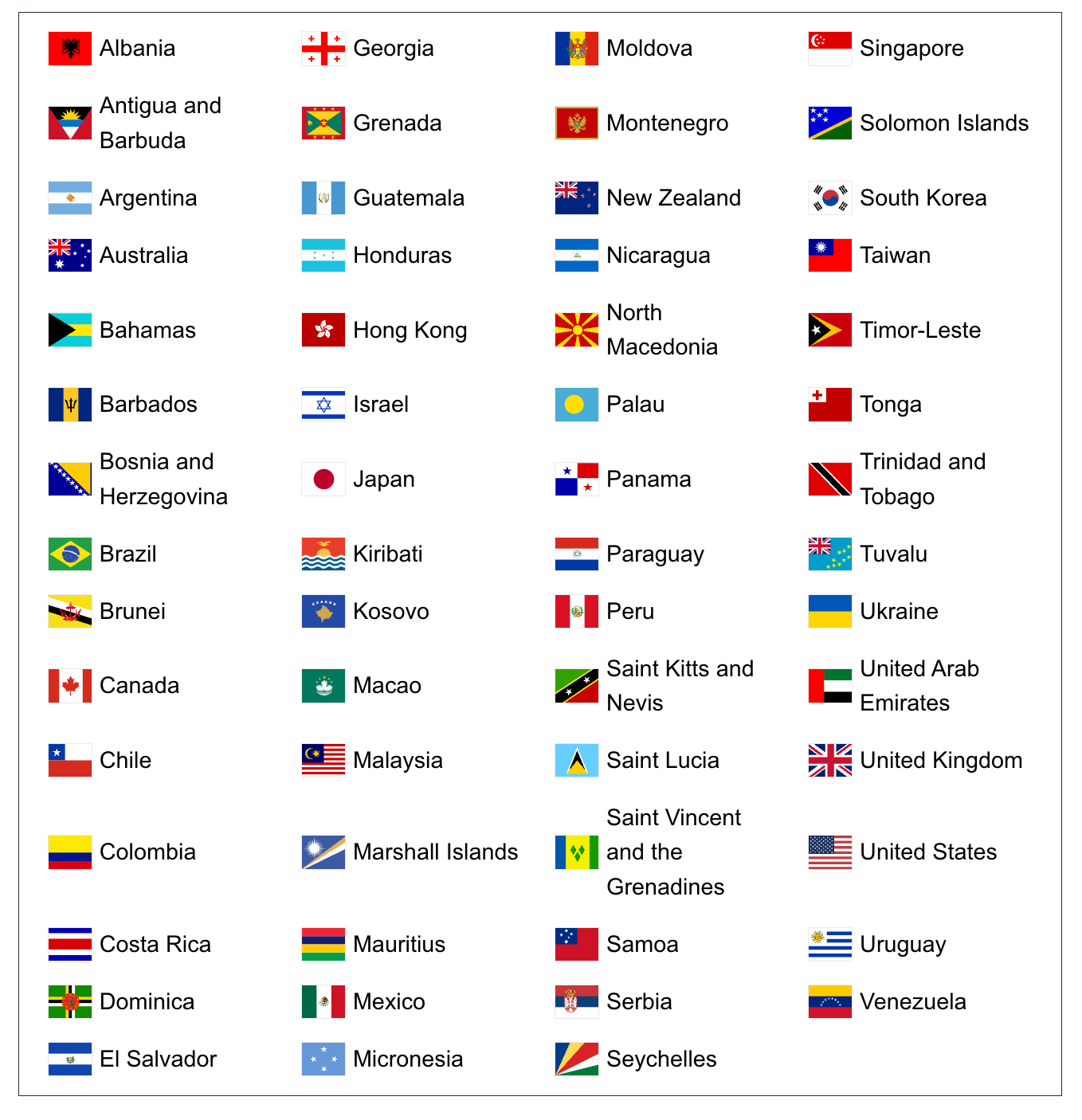After numerous false starts, the European Travel Information and Authorization System, which will be required to visit most European countries, will launch in late 2026. But now it will cost even more. After originally pricing the ETIAS fee at 7 euros (roughly $8), the European Union recently increased the cost to 20 euros (about $23).
Although sometimes referred to as a “visa,” this is actually just an online application and preauthorization. It will be much easier and much less expensive to obtain than a traditional travel visa.
As of August 2025, the EU’s official ETIAS website states that the “ETIAS will start operations in the last quarter of 2026” and that “no action is required from travelers at this point.”
“The European Union will inform about the specific date for the start of ETIAS several months prior to its launch,” it says.
When it finally launches, the program will require travelers from countries outside the Schengen Area to fill out an application before arrival and pay the 20-euro fee to enter most EU or Schengen Area countries.
What does this mean for future trips to Europe? Here’s everything you need to know about the upcoming ETIAS program.
What is ETIAS?
The ETIAS is a visa-waiver program similar to the current Electronic System for Travel Authorization used for European visitors to the U.S.
The form will act as a preauthorization system to allow travelers from 59 visa-exempt countries and territories outside the Schengen Area — including the U.K. and the U.S. — to enter the region for up to 90 days within a 180-day period without a full visa.
The ETIAS will cross-check visitor information with government databases and watch lists before issuing authorization to enter. It will also use the information collected in data tracking for business and tourism purposes.
Daily Newsletter
Reward your inbox with the TPG Daily newsletter
Join over 700,000 readers for breaking news, in-depth guides and exclusive deals from TPG’s experts
“We need to know who is crossing our borders,” Jean-Claude Juncker, former European Commission president, previously said. “This way, we will know who is traveling to Europe before they even get here.”
Is ETIAS a visa?
The ETIAS is not a traditional European visa and will only require a seemingly quick online application.
Travelers will fill out an online form with basic personal information, travel plans and history before answering a few security questions. Most applications will be approved in a few minutes, but if your application is flagged, it could take up to 30 days.
Which countries will require ETIAS?
Travelers from the following visa-exempt countries and territories will need an ETIAS authorization before traveling to Europe.

These are the 30 countries that will require incoming travelers to show ETIAS approval. New Schengen Area members like Romania and Bulgaria and European Free Trade Association nations like Iceland, Norway and Switzerland are included.

Several future Schengen member nations, including Cyprus, will also require the ETIAS. Though some European principalities and microstates like San Marino and Andorra don’t technically require the ETIAS to enter, most travelers will have to arrive through a country like Italy, France or Spain that does require the authorization. Although Ireland is part of the EU, it is not a Schengen Area country and will not require the ETIAS.
This is the full list of nations that will require visa-exempt travelers to have an ETIAS travel authorization to enter:
- Austria
- Belgium
- Bulgaria
- Croatia
- Cyprus
- Czechia
- Denmark
- Estonia
- Finland
- France
- Germany
- Greece
- Hungary
- Iceland
- Italy
- Latvia
- Liechtenstein
- Lithuania
- Luxembourg
- Malta
- Netherlands
- Norway
- Poland
- Portugal
- Romania
- Slovakia
- Slovenia
- Spain
- Sweden
- Switzerland
Do US and UK citizens need to apply for ETIAS?
American citizens (as well as those from the U.K. and the other non-EU countries not currently required to apply for visas) will need ETIAS authorization to enter the EU for visits of up to 90 days. This includes transit passengers.
If you have applied separately for a visa to enter Europe, you will not need to complete the ETIAS application.
When will I need to apply for ETIAS?
The ETIAS will launch in the last quarter of 2026, sometime in or after September 2026.
However, the launch may not happen along this exact timeline and could even be staggered. The EU has said that the ETIAS launch will be followed by a transitional period of around six months. Within this period, travelers should apply for ETIAS authorization; it’s unlikely you will be refused entry to a country during your travels as long as you also fulfill other entry conditions.
These conditions include having a passport that was issued no more than 10 years before the date you enter the EU and has a validity of at least three months past the day you depart the EU.
How much will ETIAS cost?
The ETIAS recently increased its cost to 20 euros (about $23) for a three-year permit that allows “third-country nationals” to enter the Schengen Area for up to 90 days within a 180-day period.
Only visitors between 18 and 70 years old will need to pay the application fee, but travelers of all ages will need ETIAS authorization to enter.
How do you apply for ETIAS?
Before traveling, you must access the ETIAS online application to input your passport information, name, date and place of birth, email address and phone number, plus a credit or debit card to submit the payment fee.
You’ll also need to provide your destination and answer a few background and profile questions. The ETIAS website indicates the form should take about 10 minutes to complete.
Travelers will be asked to provide details of health, education and criminal convictions.
Here is what you’ll be required to fill out, according to the ETIAS information website:
- Identifying information (including your first name, last name, date and place of birth, and parents’ first names)
- Information regarding your citizenship and passport number
- Home address
- Email and phone number
- Education and work experience
- Details about which ETIAS countries you’ll visit and the length of stay
- Background and eligibility questions about travel to war countries or places where you were deported or rejected, as well as criminal records
A legal guardian must apply for the ETIAS for minors. Family members of EU citizens from other countries are exempt from the ETIAS authorization but must submit proof of relationship, a residence card and other background information.
How long will the approval process take?
Approval for most applicants should take a matter of minutes. However, if an item is flagged in the application, a manual review will occur. The applicant can correct any improper information or appeal a denial decision. It’s recommended to apply for the ETIAS well before your travel date, especially during its initial rollout when processes are getting ironed out.
“Filling out the application is quick and easy. Most applicants will receive their ETIAS travel authorization within minutes, but in some cases, the process may take up to 30 days,” according to the EU. “This is why you should apply well in advance of your travel to avoid complications.”
How long does ETIAS last, and will you need to apply for each Europe trip?
Once approved, your ETIAS will be valid for up to three years, and you can use it on multiple trips. After three years, you will be required to apply for a new ETIAS.
Is there a renewal process?
When your ETIAS is coming up to its expiration date, you should receive an email at the address you registered during your application.
You can apply for a new ETIAS authorization up to 120 days before the expiration of your current ETIAS.
How will your data be stored?
The European Commission attempted to soften privacy fears by insisting that the ETIAS is not a visa and includes a far less intrusive application process.
“Only authorised users from the authorities involved will be able to access personal data stored in the ETIAS central system, according to their role/duties,” the EU states. “The ETIAS central system does not process or retain any payment information after the transaction has been processed.”
Bottom line
Fortunately, Americans and Brits planning to visit Europe don’t need to take any immediate action. Still, they should be aware that the ETIAS is due to launch next year.
Be prepared to go through one more step and pay one more fee in the travel process as part of the ETIAS implementation sometime in 2026. Stay tuned to TPG for further developments related to this program.
The EU also plans to roll out its long-delayed “Entry/Exit System” between Oct. 12, 2025, and April 10, 2026. The new program will apply to travelers to the Schengen Area and require them to provide fingerprint and facial biometric data instead of receiving passport stamps.
Related reading:
